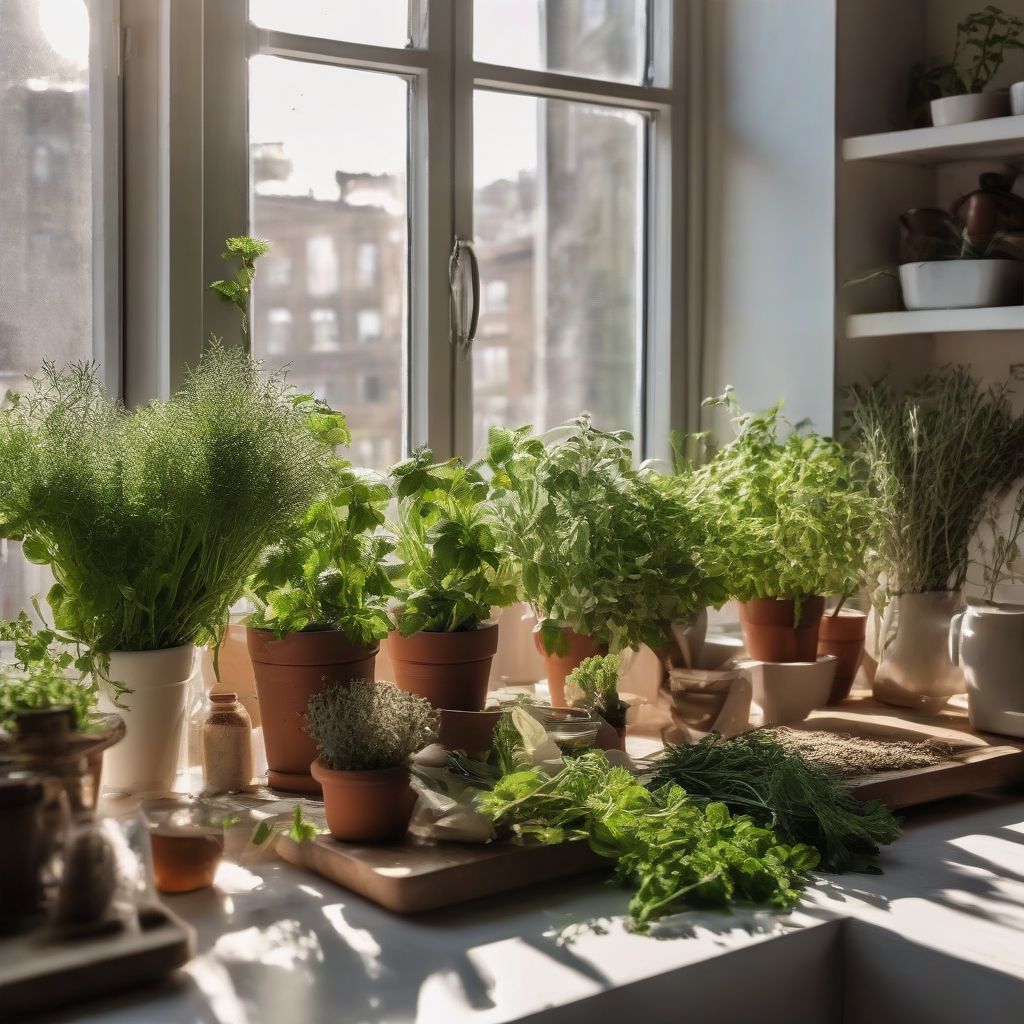Imagine reaching for a handful of fragrant basil straight from your windowsill or snipping fresh mint leaves to elevate your evening tea. Growing herbs indoors isn’t just a charming hobby; it’s a practical way to elevate your cooking and connect with nature, even in the heart of the city. If you’ve ever dreamed of having your own indoor herb garden but weren’t sure where to start, you’re in the right place. Let’s explore the world of indoor herb gardening and turn your urban dwelling into a green oasis.
Why Grow Herbs Indoors?
Before we dive into the ‘how-to,’ let’s explore the ‘why.’ There are countless benefits to cultivating an indoor herb garden:
- Freshness at Your Fingertips: No more last-minute dashes to the grocery store! Having herbs within arm’s reach means you can infuse vibrant flavor into your meals anytime.
- Enhanced Flavor: Indoor herbs tend to have a more potent flavor compared to their store-bought counterparts.
- Cost-Effective: Growing your own herbs saves you money in the long run, especially if you cook with them often.
- Therapeutic Benefits: Many herbs boast therapeutic properties. Lavender is known for its calming effects, while rosemary can boost memory and concentration.
- Connect with Nature: In the midst of a bustling city, nurturing plants indoors offers a welcome connection to nature.
 Growing Herbs Indoors in Urban Kitchen
Growing Herbs Indoors in Urban Kitchen
Choosing the Right Herbs for Your Indoor Garden
Not all herbs thrive equally well indoors. Some popular and easy-to-grow choices for beginners include:
Herbs That Love Sunlight
- Basil: This versatile herb is a must-have for Italian dishes, pesto, and salads. Basil needs at least 6 hours of sunlight daily.
- Oregano: Perfect for adding depth to Mediterranean dishes, oregano thrives in warmth and sunshine.
- Rosemary: This aromatic herb, a staple in roasted dishes, enjoys bright light and well-drained soil.
- Thyme: Another sun-loving herb, thyme is incredibly versatile, adding earthy notes to various cuisines.
Herbs That Tolerate Some Shade
- Mint: This refreshing herb, perfect for beverages and desserts, can handle some shade.
- Parsley: A kitchen essential, parsley adds a fresh bite to a range of dishes and can tolerate lower light conditions.
- Chives: With their mild onion flavor, chives are a great addition to dips, soups, and salads. They prefer bright, indirect light.
Pro Tip: If you’re unsure which herbs will thrive best in your home, consider purchasing a grow light. Grow lights mimic natural sunlight, providing the necessary light spectrum for photosynthesis, even in low-light conditions.
Creating the Ideal Indoor Herb Garden
Now that you’ve chosen your herbs, let’s create the perfect environment for them to flourish:
1. Location, Location, Location
Just like real estate, location is key for indoor herb gardens. Most herbs require a minimum of 6 hours of sunlight per day.
- South-facing windows are ideal, as they receive the most sunlight.
- East and West-facing windows work well for herbs that can tolerate some shade.
Pro Tip: Rotate your herb pots every few days to ensure even growth on all sides.
2. Selecting the Perfect Pots and Soil
- Drainage is Crucial: Choose pots with drainage holes to prevent overwatering, which can lead to root rot.
- Size Matters: Start with smaller pots for herbs like chives and parsley, while larger herbs like rosemary need more space for their roots to grow.
- Well-Draining Soil: Opt for a well-draining potting mix specifically designed for herbs and vegetables.
3. Watering and Feeding Your Indoor Herbs
- The Finger Test: Before watering, check the soil moisture by sticking your finger about an inch into the pot. If it feels dry, it’s time to water.
- Water Deeply: When you water, make sure the water reaches the roots. Allow excess water to drain out from the bottom of the pot.
- Feeding Time: Use a balanced liquid fertilizer diluted to half strength every 2-4 weeks during the growing season (spring and summer).
4. Harvesting Your Indoor Herb Bounty
- Snip, Don’t Strip: The key to a continuous harvest is to snip off the top few inches of the herb, leaving enough leaves for the plant to continue growing.
- Harvest Regularly: Regular harvesting encourages bushier growth and prevents your herbs from becoming leggy.
Troubleshooting Common Indoor Herb Garden Challenges
- Leggy Herbs: If your herbs become tall and spindly with fewer leaves, it’s a sign they’re not getting enough light. Move them to a brighter location or consider using a grow light.
- Pests: Indoor herb gardens are generally less susceptible to pests, but keep an eye out for aphids, whiteflies, or spider mites. If you spot any, use insecticidal soap or neem oil to treat the infestation.
More Than Just a Garnish: The Joys of Indoor Herb Gardening
Growing herbs indoors is a rewarding experience that goes beyond just fresh ingredients. It’s about bringing a touch of nature into your urban space, connecting with the cycle of growth, and enjoying the satisfaction of nurturing something with your own hands.
So, why not start your own indoor herb garden today? You’ll be amazed at how such a small step can transform your urban space and enhance your culinary creations.
For guidance on selecting the right plants for your indoor container garden, check out our comprehensive guide: How to Choose the Right Plants for Container Gardening
Looking to connect with other urban gardening enthusiasts? Find a Community Garden Near You and share your passion for growing!
[amazon bestseller=”indoor herb garden starter kit”]
